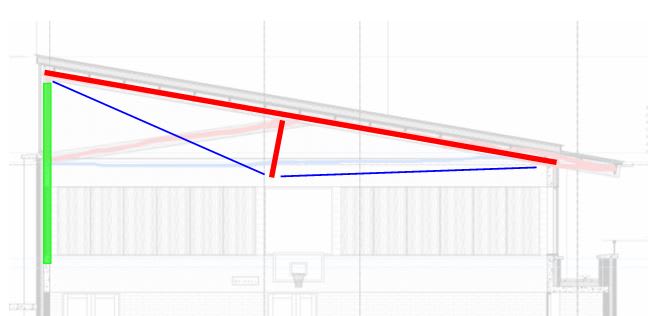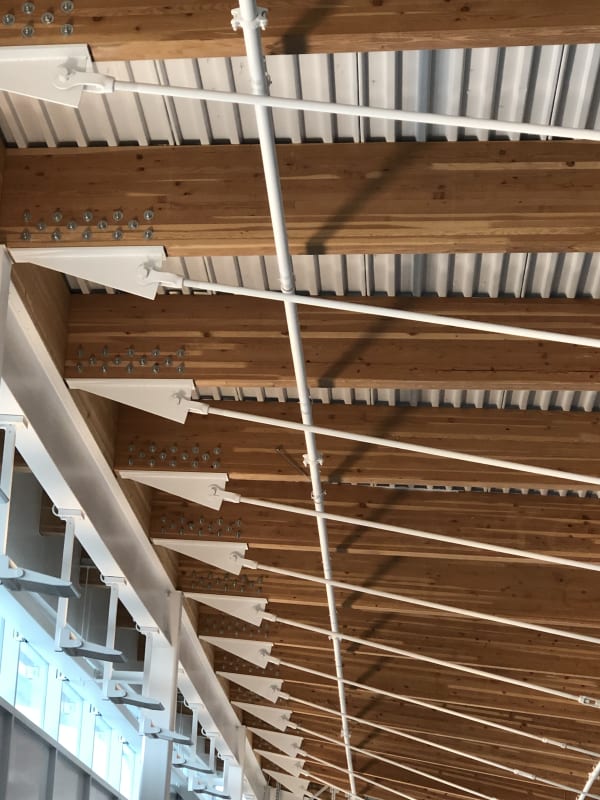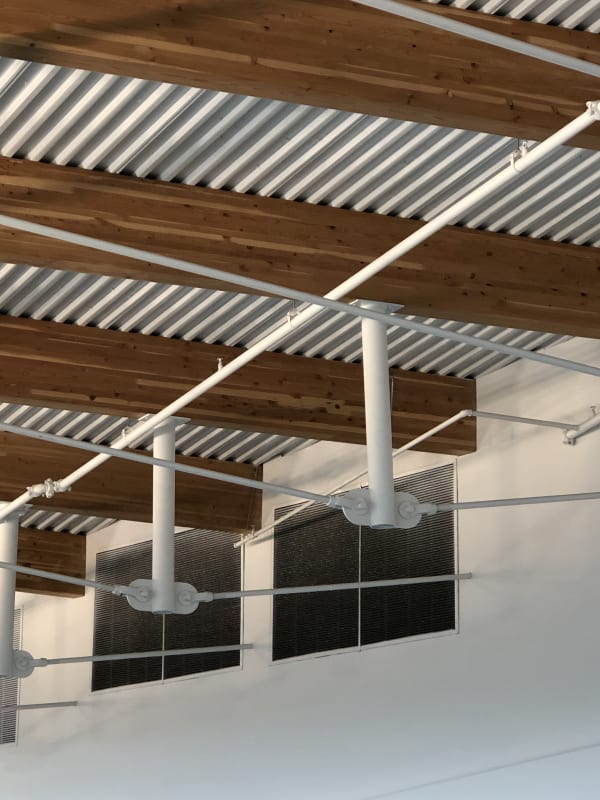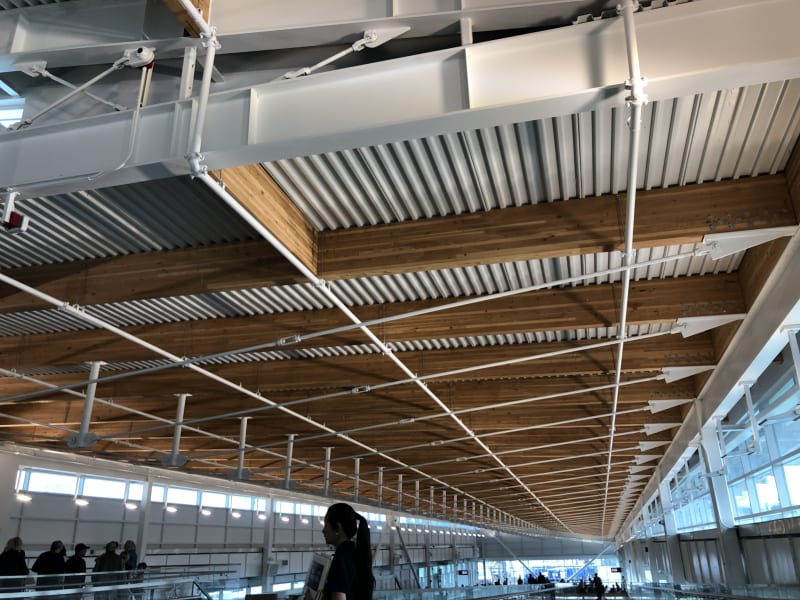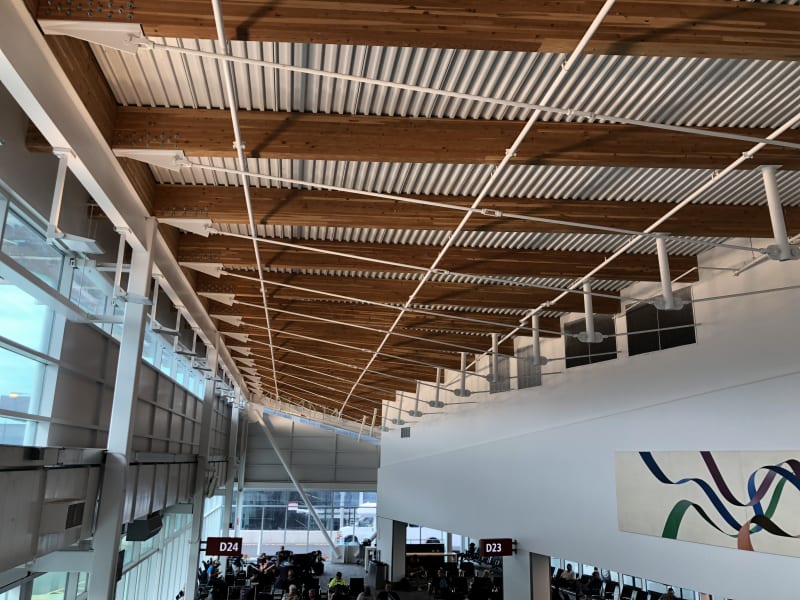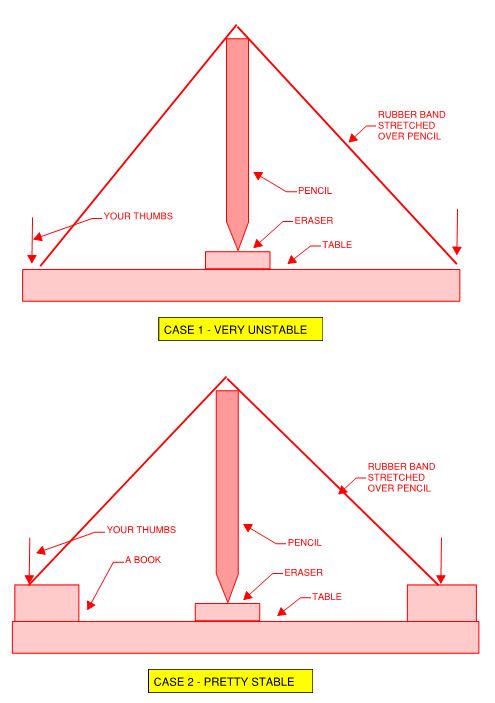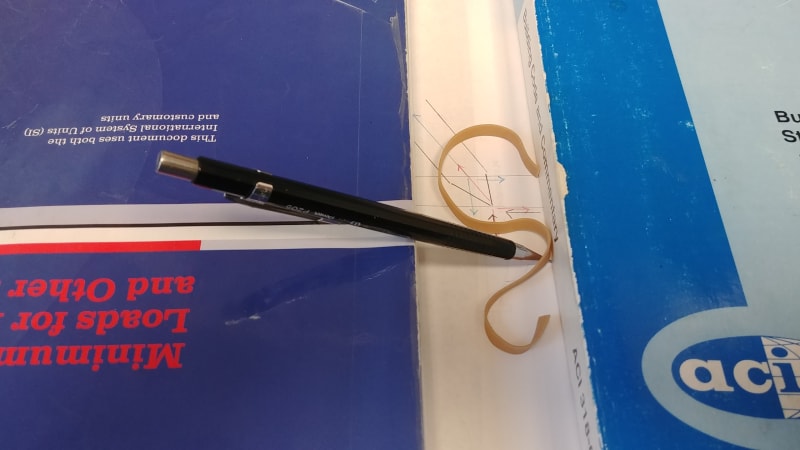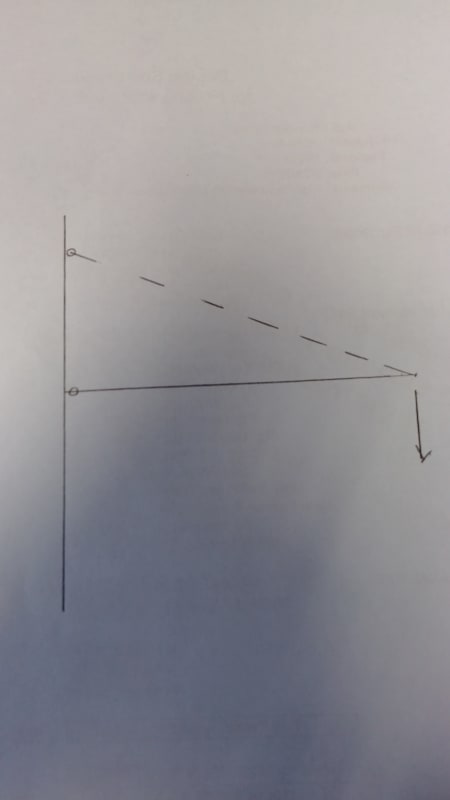MIStructE_IRE
Structural
- Sep 23, 2018
- 816
Hi, I’m designing what in principle appears to be a very simple truss… However the span is in the order of 18 m, and if you look at the attached diagram, the red members are glulam (doubles with connector plates in between) and the horizontal blue Line is a macalloy bar.
Are there any pitfalls I need to look out for here? The roof is heavy enough to resist wind uplift and is in a non seismic zone.
Axial forces are approx 400kN - anyone have any neat connection ideas?!!
Are there any pitfalls I need to look out for here? The roof is heavy enough to resist wind uplift and is in a non seismic zone.
Axial forces are approx 400kN - anyone have any neat connection ideas?!!

